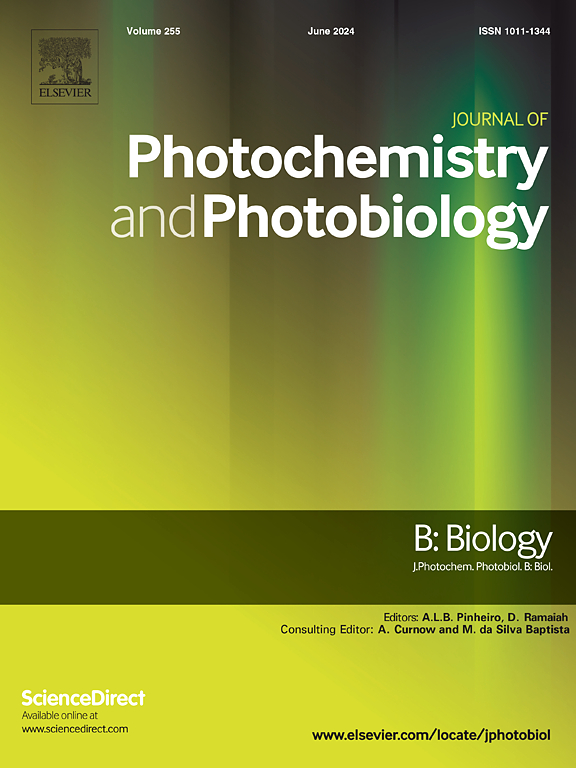发光二极管来源的蓝光过度暴露通过诱导异常ROS积累加速角膜内皮细胞老化
IF 3.7
2区 生物学
Q2 BIOCHEMISTRY & MOLECULAR BIOLOGY
Journal of photochemistry and photobiology. B, Biology
Pub Date : 2025-09-01
DOI:10.1016/j.jphotobiol.2025.113252
引用次数: 0
摘要
蓝光被定义为波长在400至500纳米之间的短波可见光,因其在可见光光谱中的高能量而被认可。发光二极管(led)的普遍使用大大增加了蓝光的暴露。角膜内皮细胞在维持角膜透明度以获得清晰视野方面起着至关重要的作用。然而,蓝光对角膜内皮的具体影响尚不清楚。为此,我们建立了LED蓝光辐照的体内和体外模型。我们检查了CEC命运和氧化应激相关指标的变化。我们的研究结果表明,蓝光暴露导致CECs中ROS的产生增加,主要在线粒体中引起氧化应激。这反过来又导致细胞衰老、功能障碍和凋亡,最终导致角膜内皮老化,加速细胞损失。值得注意的是,ROS水平的升高在早期阶段触发了Nrf2信号通路的激活。这种激活与cec的保护作用和细胞衰老的抑制有关。我们的研究揭示了蓝光照射、氧化应激和CECs命运之间的复杂关系,为角膜衰老的潜在机制提供了有价值的见解。本文章由计算机程序翻译,如有差异,请以英文原文为准。

Light-emitting diode-derived blue light overexposure accelerates corneal endothelial cell aging by inducing abnormal ROS accumulation
Blue light, defined as short-wavelength visible light ranging from 400 to 500 nm, is recognized for its high energy within the visible light spectrum. The prevalent use of light-emitting diodes (LEDs) has significantly increased exposure to blue light. Corneal endothelial cells (CECs) playing a crucial role in maintaining corneal transparency to get clear visual field. However, the specific effects of blue light on corneal endothelium remain unclear. To investigate this, in vivo and in vitro models of LED blue light irradiation were established. We examined changes in CEC fate and indicators related to oxidative stress. Our findings revealed that blue light exposure led to increased production of ROS in CECs, causing oxidative stress primarily in mitochondria. This, in turn, resulted in cell senescence, dysfunction, and apoptosis, ultimately contributing to the aging of corneal endothelium with accelerated cell loss. Notably, the rise in ROS levels triggered the activation of the Nrf2 signaling pathway in the early stages. This activation was associated with protective effects on CECs and inhibition of cell senescence. Our study sheds light on the intricate relationship between blue light exposure, oxidative stress, and the fate of CECs, providing valuable insights into the potential mechanisms underlying corneal aging.
求助全文
通过发布文献求助,成功后即可免费获取论文全文。
去求助
来源期刊
CiteScore
12.10
自引率
1.90%
发文量
161
审稿时长
37 days
期刊介绍:
The Journal of Photochemistry and Photobiology B: Biology provides a forum for the publication of papers relating to the various aspects of photobiology, as well as a means for communication in this multidisciplinary field.
The scope includes:
- Bioluminescence
- Chronobiology
- DNA repair
- Environmental photobiology
- Nanotechnology in photobiology
- Photocarcinogenesis
- Photochemistry of biomolecules
- Photodynamic therapy
- Photomedicine
- Photomorphogenesis
- Photomovement
- Photoreception
- Photosensitization
- Photosynthesis
- Phototechnology
- Spectroscopy of biological systems
- UV and visible radiation effects and vision.

 求助内容:
求助内容: 应助结果提醒方式:
应助结果提醒方式:


